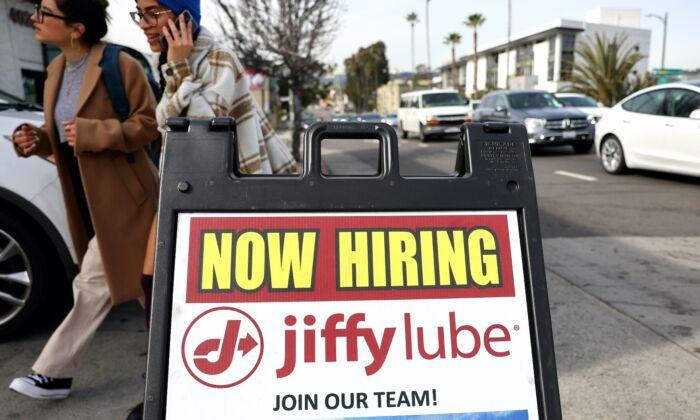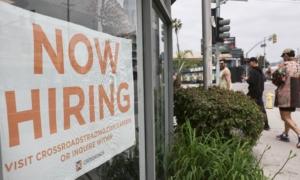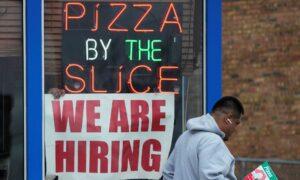Employment gains were revised down again as the change for July was adjusted lower by 30,000 to 157,000. Jobs were also adjusted for June by 80,000 to 105,000 (the initial estimate was 209,000), making it the worst jobs report since December 2020. From January to July, downward revisions have totaled 355,000.
The unemployment rate climbed to 3.8 percent last month, from 3.5 percent in July. That matched the market forecast.
Annual average hourly earnings eased to 4.3 percent, down from 4.4 percent, and matched economists’ expectations. On a month-over-month basis, average hourly earnings rose 0.2 percent, down from 0.4 percent.
The labor force participation rate edged up to 62.8 percent, and average weekly hours inched higher to 34.4.
Three sectors contributed most of the employment gains: health care (71,000), leisure and hospitality (40,000), and social assistance (26,000). Transportation and warehousing declined by 34,000, while information employment shed 15,000 workers.
Government payrolls climbed by 8,000 and the manufacturing industry added 16,000 positions.
Full-time jobs fell by 85,000, although part-time positions increased by 32,000. The number of people employed part time for economic reasons was roughly flat at 4.2 million. The number of people working two or more jobs remained above 8 million in August. The number of individuals unemployed for less than five weeks and jobless for 27 weeks or more rose to 2.2 million and 1.3 million, respectively. The long-term unemployment represented more than 20 percent of all jobless individuals.
Financial markets celebrated the unexpected increase in the unemployment rate in pre-market trading on Sept. 1, with investors thinking that the surprise jump would prevent the Federal Reserve from raising interest rates, before closing mixed.
Bryce Doty, senior vice president and senior portfolio manager at Sit Investment Associates, believes the unexpected jump in the jobless rate “will steal the show.”
“Unemployment jumping from 3.5% to 3.8% takes pressure off the Fed,” Mr. Doty wrote in a note.
Heading Into the Jobs Report
A plethora of employment data points last week supports concerns that the labor market is cooling.Job quits edged lower, sliding by 253,000 to 3.549 million in June. This was the lowest reading since February 2021.
“Job openings are falling, and American workers are more reluctant to leave their positions right now. The job market is resetting after the pandemic and post-pandemic hiring frenzy,” Andrew Challenger, senior vice president of the employment firm, said in a statement.
This could be a sign that the national economy is returning to the way it was before the coronavirus pandemic, says Nela Richardson, the chief economist at ADP.
“After two years of exceptional gains tied to the recovery, we’re moving toward more sustainable growth in pay and employment as the economic effects of the pandemic recede,” Ms. Richardson said.
Effects on the Federal Reserve
The latest labor data might prove to be good news for the Federal Reserve.Speaking at the central bank’s annual Jackson Hole economic symposium on Aug. 26, Fed Chair Jerome Powell noted that softer labor market conditions are needed to achieve the institution’s 2 percent inflation target rate.
“These are the unfortunate costs of reducing inflation. But a failure to restore price stability would mean far greater pain.”
He also warned that the Fed could raise interest rates because inflation remains “too high.”
A blend of modest jobs growth and a substantial increase in the unemployment rate shows that the Federal Reserve’s work is done, says James Knightley, the chief international economist at ING.
“With inflation set to continue slowing, the Fed is surely not hiking interest rates in September and is unlikely to do so in November either,” Mr. Knightley wrote in a note. “We continue to believe that US interest rates have peaked and the next move will be a cut. We are currently forecasting that to happen in March 2024.”
The rate-setting committee is scheduled to hold its next two-day policy meeting on Sept. 19 and 20.







